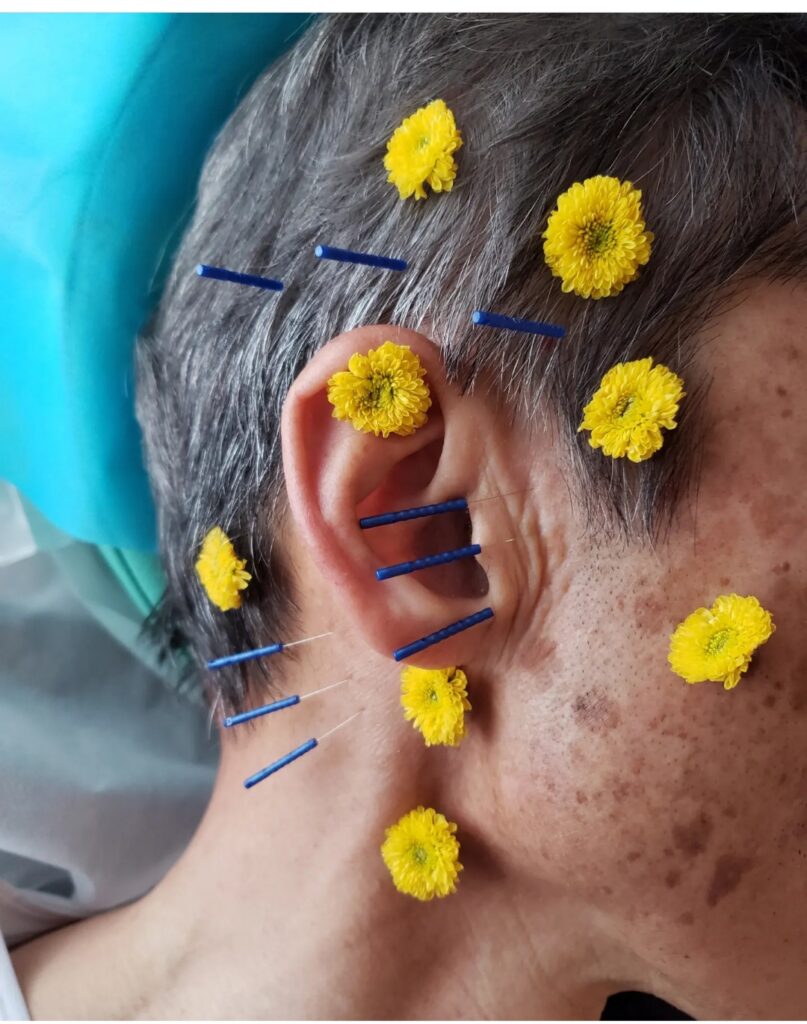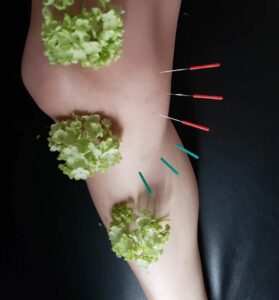唾石症
sialolithiasis
耳下腺の違和感や、耳の下周辺の違和感や痛み、耳の周りや額の下の周りが腫れて熱感があり、飲食時や、物を飲み込んだ際に耳下腺が痛むなどの症状があり来院。唾液は、唾液腺の中の導管と呼ばれる管を通って口の中に流れ出ます。 唾石症とは、唾液腺の中や導管の中に石ができる症状です。尿管結石や胆石と似ていると言われています。唾液腺や導管の中にできた石が、詰まりの原因となるため、唾液線が腫れて痛みがでるなどの症状がでます。食事の時に、症状が現れやすくなります。口腔内には、常在菌も多く、細菌感染を引き起こしやすく、痛み、腫れが悪化してしまう可能性もあります。顎下節は、耳の穴のすぐ下に指を当てて、その状態で口を開けたり閉めたりすると、耳の辺りが動きます、この部分に顎関節が存在します。顎関節症で耳が痛くなることはめずらしくありません。これは顎関節と耳が非常に近い位置にあるため、顎関節で生じた振動や炎症がそのまま耳へと影響を及ぼすことがあるからと言われています。このようなケースでは、耳鼻咽喉科に受診をおすすめまします。耳下腺炎なども併発している場合もあります。今症例では、鍼灸治療としては、顎関節症や唾石症の疑いから、派生していると思われる耳鳴りや耳の痛み、頭痛、側頭筋の痛みや過緊張に対して、症状改善、疼痛緩和、鎮静、鎮痛を目的に施術しています。顎関節周囲の筋肉の緊張を放置しておくと、首や肩の筋肉のこりにまで広がっていくので、こまめにほぐしておくにも良いでしょう。
She came to the hospital with symptoms of discomfort and pain in the parotid gland, discomfort and pain around the area under the ear, swelling and heat around the ear and under the forehead, and pain in the parotid gland when eating or drinking or when swallowing things. Saliva flows out of the mouth through ducts called conduits in the salivary glands. Salivary stone disease is a condition in which stones form in the salivary glands and in the conduits. It is said to be similar to ureteral stones and gallstones. Stones in the salivary glands and conduits cause blockages, resulting in symptoms such as swelling and pain in the salivary line. Symptoms are more likely to occur when eating. There are also many bacteria in the oral cavity, which can easily cause bacterial infections and worsen the pain and swelling. The submandibular joint is located just below the ear canal, and when the mouth is opened or closed in that position, the ear area moves, and the TMJ joint is located in this area. It is not uncommon for TMJ to cause ear pain. This is because the TMJ joint and the ear are located very close to each other, and vibrations and inflammation in the TMJ joint can directly affect the ear. In such cases, a visit to an otorhinolaryngologist is recommended. Parotitis may also be present. In the present case, acupuncture treatment is aimed at symptom improvement, pain relief, sedation, and analgesia for tinnitus, ear pain, headache, temporal muscle pain and hypertonia, which are suspected to be derived from TMJ disorder and salivary stone disease. It is also a good idea to frequently relieve muscle tension around the TMJ, as if left untreated, it can spread to stiffness in the neck and shoulder muscles.



